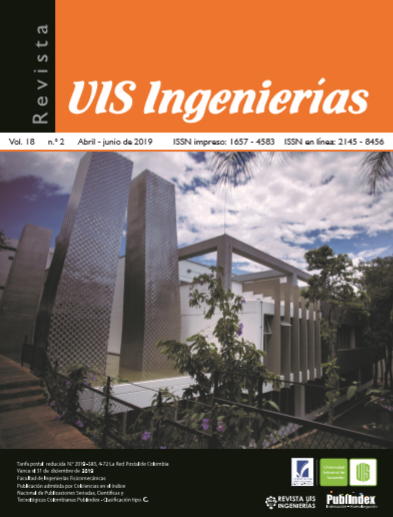Integration testing of distributed generation in a micro-network on the UNRC campus
Published 2019-02-07
Keywords
- distributed power generation,
- microgrids,
- renewable energy sources,
- solar power generation,
- wind energy generation
How to Cite
Abstract
The traditional electric grid is changing, being affected in all their fields by the technological advances, and moving to a new paradigm called smart grid. This is the reason for which different forms of incentives and different systems of energy commercialization for the distributed generation can be found; that added to the investment in research and development make that the destination of the world energy investments goes mostly to the renewable sources. Today, there are several renewable energy elements at different voltage levels of the grid. There are different pilot tests where different technologies and products are tested, which are presented daily by different manufacturers.
In this work, an understudy microgrid is presented where different renewable sources are connected to the traditional grid, supporting like that the Argentinean objective of having 20% of renewable energy by the year 2025.
In addition to the calculations made for the campus, as a pilot test, practical experiences are presented in the university's electricity laboratory by integrating renewable sources in the distribution network. We analyze the steady-state and short-circuit currents, which provide the different types of source to the network and how they affect distribution protection systems. The proposed micro-network consists of wind turbines and photovoltaic panels in different configurations distributed across the campus, where after analyzing the data obtained, better results than expected were yielded.
Downloads
References
C. Patrascu, N. Muntean, O. Cornea and A. Hedes, "Microgrid laboratory for educational and research purposes," 2016 IEEE 16th International Conference on Environment and Electrical Engineering (EEEIC), Florence, 2016, pp. 1-6. doi: 10.1109/EEEIC.2016.7555682
M. Taylor, P. Ralon and A. Ilas, The power to change: solar and wind cost reduction potential to 2025. Germany; IRENA, 2016.
R. Ferroukhi, G. Kieffer, Á. López-Peña, L. Barroso, R. Ferreira, M. Muñoz, R. Gomelski, Renewable energy market analysis Latin America”. Abu Dhabi: IRENA, 2016.
O. González, A. Pavas, S. Sánchez, “Cuantificación del ahorro de energía eléctrica en clientes residenciales mediante acciones de gestión de demanda”, Rev. UIS Ing., vol. 16, no. 2, pp. 217-226, 2017. doi: 10.18273/revuin.v16n2-2017020
“Radiación solar en Argentina 2014”, Solargis. [En línea]. Disponible en: http://solargis.com/products/maps-and-gis-data/free/download/argentina. [Accedido: 27-jun-2016]
“Mapa eólico argentino Sig eólico”, Ministerio de Planificación Federal Inversión Pública y Servicios de Argentina. [En línea]. Disponible en: http://sigeolico.minplan.gob.ar/frameset.php. [Accedido: 27-jun-2016]
P. Vergara et al., “Evaluación del potencial solar y eólico del campus central de la Universidad Industrial de Santander y la ciudad de Bucaramanga, Colombia”, Rev. UIS Ing., vol. 13, no. 2, pp. 49-57, 2014,
S. M. Nesci, J. C. Gómez and M. M. Morcos, "Excitation sharing between the grid and the rotor excitation source of a doubly-fed induction generator in the presence of distribution system transients," IEEE PES ISGT Europe 2013, Lyngby, 2013, pp. 1-5. doi: 10.1109/ISGTEurope.2013.6695232
S. Nesci, J. C. Gómez, “Effect of the Excitation Type and Level on the Short-Circuit Current Supplied for Induction Generators”, Sixth IEEE/PES Transmission and Distribution: Latin America Conference and Exposition (T&D-LA), 2012, Montevideo, Uruguay. 2012.
J. C. Amatti, S. Nesci, J. C. Gómez, E. Florena, “Analisis del sistema de protecciones con generación distribuida”, Décimo Quinto Encuentro Regional Ibero americano del CIGRÉ Foz de Iguazú-PR, Brasil, 2013.
J. C. Gómez, S. Nesci, D. Tourn, C. Reineri, “Nueva curva característica de energía específica (i2t) para aplicarse a los estudios de protecciones en presencia de generación distribuida,” CIDEL, Buenos Aires, 2014.
J. C. Gómez, M. M. Morcos, “Chapter 10” en Power Quality: Mitigation Technologies in a Distributed Environment, London: Springer-Verlag, 2007.

